- Home
- Simon Winchester
Krakatoa Page 3
Krakatoa Read online
Page 3
From the moment of the return of that first unhappy excursion to Java and beyond, shoals of Dutch fleets, each backed by packs of excited adventurers, began coursing across the ocean, bound for Banten and the fast-opening Oriental universe beyond. In May 1598 a fleet twice the size of de Houtman's, under the command of the more competent and distinguished sea-captain Jacob van Neck, left Texel for Banten, reached there in half the time and sailed away with enough pepper for its backers to realize no less than a 400 per cent return on their investment. The floodgates then opened, once and for all.
Before the end of 1601 fourteen fleets had gone East – a total of sixty-five vessels. Most had passed along the conventional route via the Cape of Good Hope. Others, keen to be first to reach the spice-rich islands on the eastern side of the archipelago, took the much riskier path south-westwards across the open Atlantic, through the newly discovered, but windy and reef-strewn, Strait of Magellan and then across the entire Pacific Ocean. It was an extraordinary, boisterous, devil-may-care time, and the docks in Hoorn and Enkhuizen and Amsterdam were frantic with shipping, always leaving, leaving, leaving. Some of the more sobersided Hollanders sniffed over their glasses of genever and accused the adventurers of indulging what they termed the wild navigation. And wild it may well have been – but the commercial results were obvious. The Hollanders were on to something big.
Banten itself – though it was once the largest city in South-East Asia and one of the most famous of the world's seventeenth-century's ports – is these days anything but big. The garrison that the local sultan permitted the Dutch to build, Fort Speelwijk, still stands: with its ten-foot-thick walls, its worn machicolations and breastworks, its muddy tunnels and embrasures now greasy with tropic mould, it is a melancholy reminder of how mighty and ambitious the Dutch had once been. The sea that their vigilant sentries scanned for approaching enemy sails now laps a full mile away beyond the fort's curtain-walls: silt oozing from the river started to choke the estuary in the nineteenth century, and before long had rendered Banten port unusable for vessels much larger than whalers and large canoes. Its rise was spectacular; its fall – like the fall of empires more generally – slow and inevitable. It has long since been abandoned as a port; nowadays Banten is little more than a collection of shanties and ruins, with a lane of shops selling Muslim caps and boxes of locally grown dates. There are no local pepper plantations: western Java has turned its plantations to tapioca and coffee, and it is Sumatra that now produces about a sixth of the world's 200,000 yearly tons of Piper nigrum.
Yet Banten still makes its own contribution to the economic well-being of the islands, Just beside the old Dutch fort, at the entrance to the maze of lanes that lead to the former sultan's ruined palace, stands a curious trio of immense and very ugly cement towers. They look mysterious and rather sinister. They are formidably well guarded with razor-wire, attack dogs and civilian guards (one of them a young woman who contentedly suckled her infant when I inquired – in vain – if I might go inside). They look as if they might be kin to Fort Speelwijk, fortresses of a kind too, a protection for a population fretful about some nameless and more contemporary disaster.
In fact they are nothing of the kind. The towers are man-made homes for the local birds called swiftlets, members of the genus Collocalia, whose saliva is the basis for that most celebrated Cantonese aphrodisiac, bird's nest soup. The towers' owner is a Chinese restaurateur from Jakarta. He thinks it most unlikely that any client would ever realize that the soup he serves comes not from nests plucked in the traditional manner from dangerous clifftops in Thailand, but from those farmed weekly inside a cement blockhouse in a former Dutch pepper port. He is reputed to be one of the wealthiest Chinese in all of modern Java. He remains blissfully unaware that he made his fortune in the town that had once made other outsiders, the entirely dissimilar burghers of seventeenth-century Amsterdam, extremely wealthy too.
With the advent of those Dutch, whose maritime traditions had already spawned legions of cartographers, came maps: good, beautiful, accurate and before too long utterly magnificent maps. With the making of maps came the observed and calculated details of place. With details of place came names – and among them, quite early in the process, the first naming of the tiny island that is the subject of this story.
For 1,500 years the notion of the great Greek astronomer Ptolemy, published in his definitive Geography, was that Africa and Asia were one, connected by a land-bridge across the southern Indian Ocean. It took a very long while to discredit this idea. But by the fourteenth century, on the basis of reports from early explorers (such as Marco Polo) and intelligence gathered from Arab travellers and traders, cartographers in Europe began to suppose the existence of a number of peninsulas and discrete islands littering the ocean between China and Africa. The dangling appendages of India and the Malayan peninsula began to appear on maps first; and then three of the largest supposed islands, today's Borneo, Sumatra and Java, started to be depicted on charts printed in the sixteenth century (though there was a long period when lozenge-shaped Sumatra was confused with its not-too-distant neighbour, pearl-drop-shaped Ceylon).
Martin Behaim's globe of 1492 – his erdapfel, or ‘earth-apple’, as this solid wooden sphere was charmingly called – shows painted on its surface the islands of Java and Sumatra, part of a ragged chain of land between a quite distinct Malayan peninsula and a body of vaguely determinate shape that is just recognizable as Borneo. And Martin Waldseemüller, the German mapmaker who, in 1507, was the first to put the name America on to a world map, clearly indicates on one of the same woodcut's dozen sheets an island, to which he gives the name Java Minor, quite separate from another island to its west.
And even before these, there were prescient maps made elsewhere. Early Thai, Indian and Korean maps, often delightfully fanciful, indicate bodies of land that could well be the two huge islands. There is also a copy of a fourth-century Roman road map from England to India (with the distances variously measured out in Roman miles, Gallic leagues and Persian parasangs) showing Ceylon as a decidedly insular insula Taprobane at its bottom right-hand corner, but which could, from its size and familiar shape, easily be mistaken for Sumatra.
Once the Italian, Spanish and Portuguese sailor-adventurers began to penetrate to the east of Malacca, this imprecision vanished. Sumatra and Java are by then named and shown to exist, most assuredly, separated by a body of water called the Strait of Sunda. Far to their east the nutmeg island of Banda* finds its way on to a map of 1516, as well as a proper (and more or less properly spelled) Borneo, located five years before Magellan's expeditions reached it on history's first (and for Magellan, tragic and fatal) circumnavigation. The Moluccas, Timor, the Celebes and the Philippines likewise all begin to appear on maps and portolanos and charts as well, their positions and their dimensions depicted ever more accurately – such that by the end of the sixteenth century, when the Dutch were poised to sail in from Texel to try to wrest the spice monopoly from the stranglehold of the Mediterranean powers, every major island between the Maldives and the coast of China was illustrated, reasonably correct in outline, place and size.
And then, with the turn of the century, and as those first commercial fleets began their laborious voyages out from Texel, so along with the merchants went the Dutch cartographic masters. These were men possessed of formidable naval knowledge, great artistic brilliance and still unrivalled mapmaking skills, who would push back the boundaries of world cartographic knowledge further and even further, and also add to their newly developed picture of the planet a wonderful measure of beauty and style. Their maps are treasures, awesome in both utility and aspect. And it was one of these mapmakers, Jan Huyghen van Linschoten, who was to make the first positive identification of the volcano-island that would cause such mischief in the years ahead.
Van Linschoten was a curious and energetic traveller, a man afflicted by wanderlust centuries before the ailment was properly known. ‘My heart is longing day and night for voyages
to faraway lands,’ his journals note in an entry for 1587. His travels were prodigious. He was keenly interested in the Arctic, and his numerous journeys there – to the lonely supra-Russian island of Novaya Zemlya, for example, to which he went with the Dutchman who named the Barents Sea – were recounted in a hugely popular book that inspired both the English and the Dutch to try to forge a sea-route through the ice to India (they never did).
But it was for the maps he created as a by-product of his six years in service to the Portuguese that he remains best known today. He had travelled East via Africa and the Cape across to the administrative capital of Goa, in western India, working as bookkeeper to the Portuguese Catholic archbishop. He spent the six years from 1583 in the immense province, travelling with the divine, noting furiously details of every place and peoples he visited (though we do not know if he actually visited Java and the islands to its east). In 1595 he published his account of it all – the Itinerario, one of the most detailed travel guides ever known. Bound into the volume were a number of remarkable maps – some by Portuguese mapmakers, some by Spaniards, and one exquisite map of the Far East drawn by van Linschoten himself.
The map itself has a curious history: it was executed by a Dutchman, based on information that van Linschoten admits was ‘from the most correct charts that the Portuguese pilots nowadays make use of and later handed over and republished for the English. The custom was for these four powers jealously to guard such information; yet in the case of this one beautiful creation – with great cartouches, sea-monsters, rhumb lines, the arms of Portugal and a flourish of compass roses – it was allowed to be seen by the navigating hierarchs of all four competing nations.
On the map much is recognizable – China, the Mekong, Malaya, Luzon. The islands of Java and Sumatra are also named and shaped more or less as they should be (though the island of Sulawesi near by is a strange ‘paramecium’ shape, according to one critic). Between Sumatra and what van Linschoten called Java Major is a narrow strait, and within it a tangled mess of unnamed islands. But though they are anonymous on the map, there is, and crucially for this story, the text from the Itinerario, which acts as vade mecum for any Java-bound navigators using this map, whom it duly advises:
to reach the mouth of the Sunda Strait stay close to the mainland of Sumatra, always keeping a good eye out for the mountains and cliffs, of which there are many ahead, for one does not know where one will find the mouth of the Strait except only by the knowledge of the islands; look for a high island located straight across from the land tip on the north side of Sumatra, which with the island of Java Major forms the Strait that ends here. On the northwest side of the coast are two or three small islands about one mile away from land. On the island closest to land a ship with Frenchmen was run aground once. Its guns went to the king of the Island Bantam, and the one from Calapa. And a mile from land towards the south is an island with a high top or pointed mountain.
There can be no doubt at all, despite van Linschoten's failure to name the island on either his chart or in the Itinerario, that this is Krakatoa.
He probably never saw it; though he travelled widely from Goa, there is no certainty that he visited the archipelago itself; all his reports come from his immense network of Portuguese pilots. But there simply is no other island in the Strait that fits his description (or, rather, until 1883 there was no other such island in the Strait, for since that August morning the original island has essentially not existed at all). There is no ‘pointed mountain’ in van Linschoten's reported position at the northern end of the Strait or, for that matter, anywhere else near by.
Other early Dutch cartographers are revered along with van Linschoten: Blaeu, Lodewijcksz, Hondius, Visscher and, equally important in this one context, Lucas Janszoon Waghenaer. For though van Linschoten writes briefly of his island with its pointed
Jan Huyghen van Linschoten's 1595 map of the Far East, which shows a dusting of islets and skerries in the strait between Sumatra and Java Mayor.Krakatoa – seen for the first time ever on a European chart – is probably the large island marked opposite Palimbam.
summit in 1595, and though a year later Willem Lodewijcksz records so many small islands in the Strait that one crew said they had difficulty finding a channel along its western side, it was the Waghenaer map that first depicted the island and properly captioned it with an approximation of a soon-to-be-familiar name.
Lucas Janszoon Waghenaer was a Dutch pilot who almost single-handedly revolutionized the entire business of sea-borne maps. Until his publication in 1583 of a rutter, a mass-produced collection of navigational notes and charts that a mariner might use to help plan a voyage in unfamiliar waters, such maps as a ship's captain had taken on board were hand-made, singly produced and often ultra-secret. Waghenaer decided instead that ships' charts should be printed, using wooden or engraved metal blocks. They should be made by the hundreds, the better to encourage men to sail, to explore and to discover.
His maps are many, and among the finest ever made. They are colourful, filled, like van Linschoten's, with elaborate cartouches, ships in full sail, fabulous sea-monsters and a host of devices – compasses, scales, indications of deeps and shallows – that are still in use on charts today. His name was Anglicized to Waggoner, and so popular and respected did his works become that the word is still heard in some of the older chandleries and appears in recent dictionaries of the sea; Dalrymple's famous chart-book was once known colloquially as The English Waggoner.
His exquisite chart of the Sunda Strait was published in 1602, seven years after the Itinerario. Engraved on the map, halfway between the immense body ofland called Suma. Pars. and its equally immense eastern neighbour, Javae Pars., is a group of what appear to be four small islands – a trinity of larger bodies, partially enclosing a fourth. The inscription says simply Pulo Carcata.
It was half a century before the island was named in a prose work. In October 1658 a Dutch doctor, Wouter Schouten, noted in his travelogue that he passed the ‘high tree-covered island Krakatau’ – the first mention of the island by its currently accepted name.
As to the origin of this name, it sometimes seems that there are almost as many theories as there are geographers. The word Pulau that appeared on the Waghenaer chart remains,, since it is the modern bahasa Indonesia for ‘island’. But Carcata? Or Krakatau? Or something in between? Both the idea of what should be the spelling and the etymologies of its various names are an enduring mystery.
There is an early and linguistically alluring report by a French Jesuit priest, Guy Tachard, suggesting that it was an onomatopoeia. Tachard passed the island eighty years after the Dutch cartographers, and wrote in his log that ‘we made many Tacks to double the island of Cacatoua, so-called because of the white Parrots that are upon that Isle, and which incessantly repeat the name’. It sounds improbable, not least because of the difficulty that any mariner might experience trying to hear the call of land-based birds from high on the windy deck of a passing ship.
Others subsequently thought that Krakatoa, or the more common local form Krakatau, derives essentially from one of three words, karta-karkata, karkataka or rakata, which are the Sanskrit and, according to some, the Old Javan words meaning ‘lobster’ or ‘crab’. Then there is a Malay word, kelakatoe, which means ‘flying white ant’. Since crabs and parrots belong on the island – or since they did, at least, until that dire August morning in 1883 – any one of the two last lexical explanations seems reasonably acceptable.* White ants only occur in the eastern part of the archipelago, rendering this theory rather less credible; though perhaps rather more credible than the notion, briefly popular in Batavia, that an Indian ship's captain had asked a local boatman what name was given to the pointed mountain he could see, prompting the local to reply Kaga tau, meaning ‘I don't know’.†
*
The effect of the eastward onrush of armadas of Dutch sailing vessels, their captains now well equipped with their bound collections, their rutters, of the region
's new-printed charts, was immediate and profound. Such Portuguese as remained were soon overwhelmed and dismissed. They were eventually and officially sent packing from the Banten pepper port in 1601. In 1605 the Dutch seized all the eastern islands of the Moluccas, which included the nutmeg and clove islands of the Banda Sea. The fort at Solor fell in 1613, and Malacca, the great trading station on the western side of the Malay peninsula, passed from the control of Goa to that of Amsterdam in 1641. The Dutch speedily assumed power across fully forty-five degrees of eastern longitude, and before long effective control of what were to be called the East Indies was almost (aside from tenacious Portuguese holdouts on the islands of Flores and Timor, and fast-fading competition from the British in a variety of tempting places) entirely theirs.*
In 1602 the Dutch took a step of profound importance. It was a move that, as well as hugely improving their own merchants' fortunes in the East, helped to create a business model for the foundations of all of modern capitalism. The government formally chartered a company, the Vereenigde Oost-Indische Compagnie, known to this day as the VOC, to act in concert, and as a monopoly, in all trading matters to the east of the Cape of Good Hope. And not just trading: the VOC was given exclusive and quasi-sovereign rights to enter into treaties with local princes, to build forts, to maintain armed forces and to set up administrative systems of government whose officials pledged loyalty to the government of the Netherlands.

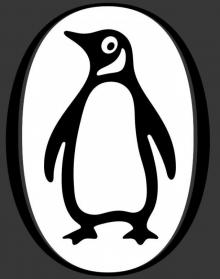 The Surgeon of Crowthorne
The Surgeon of Crowthorne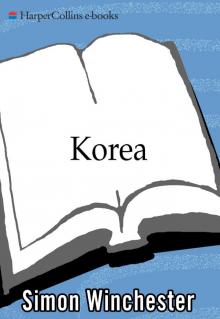 Korea: A Walk Through the Land of Miracles
Korea: A Walk Through the Land of Miracles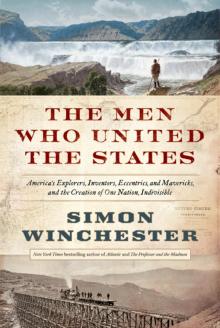 The Men Who United the States: America's Explorers
The Men Who United the States: America's Explorers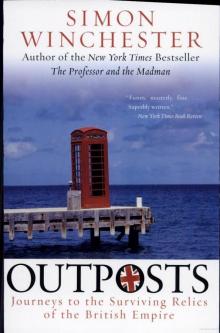 Outposts: Journeys to the Surviving Relics of the British Empire
Outposts: Journeys to the Surviving Relics of the British Empire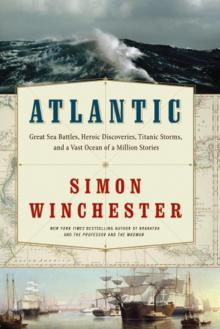 Atlantic: Great Sea Battles, Heroic Discoveries, Titanic Storms
Atlantic: Great Sea Battles, Heroic Discoveries, Titanic Storms The Professor and the Madman: A Tale of Murder, Insanity
The Professor and the Madman: A Tale of Murder, Insanity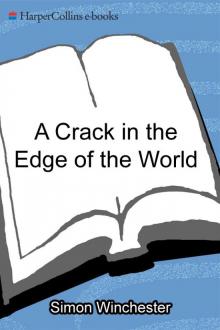 A Crack in the Edge of the World
A Crack in the Edge of the World The Perfectionists: How Precision Engineers Created the Modern World
The Perfectionists: How Precision Engineers Created the Modern World The Man Who Loved China: The Fantastic Story of the Eccentric Scientist
The Man Who Loved China: The Fantastic Story of the Eccentric Scientist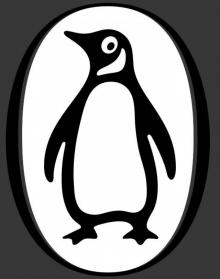 The River at the Center of the World: A Journey Up the Yangtze
The River at the Center of the World: A Journey Up the Yangtze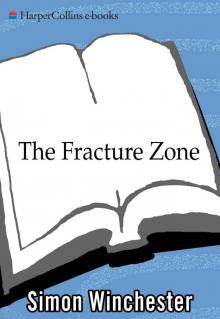 The Fracture Zone: My Return to the Balkans
The Fracture Zone: My Return to the Balkans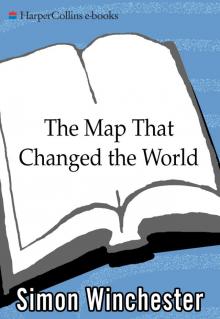 The Map That Changed the World
The Map That Changed the World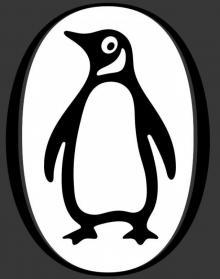 Krakatoa: The Day the World Exploded
Krakatoa: The Day the World Exploded The Man Who Loved China
The Man Who Loved China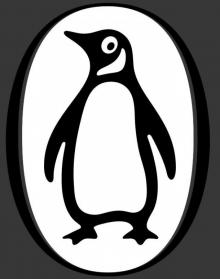 The River at the Centre of the World
The River at the Centre of the World Bomb, Book and Compass
Bomb, Book and Compass The Perfectionists
The Perfectionists The Meaning of Everything
The Meaning of Everything Exactly
Exactly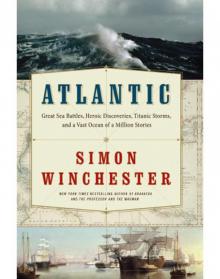 Atlantic
Atlantic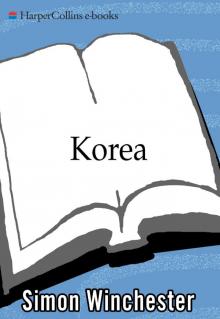 Korea
Korea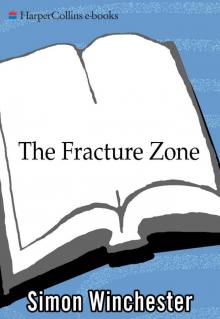 The Fracture Zone
The Fracture Zone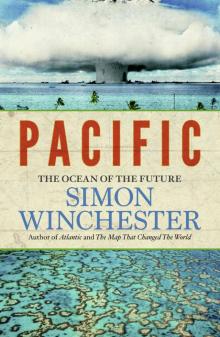 Pacific
Pacific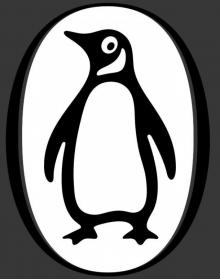 Krakatoa
Krakatoa The Professor and the Madman
The Professor and the Madman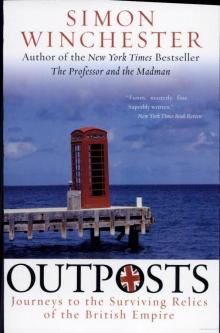 Outposts
Outposts